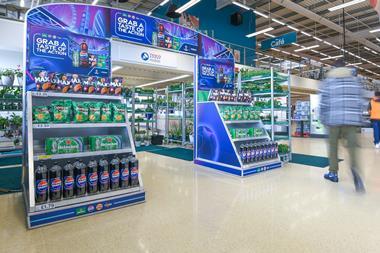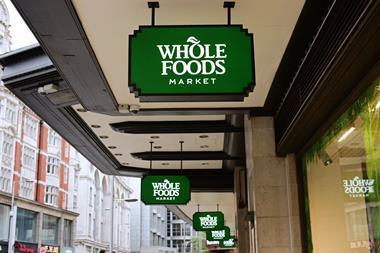As the pound strengthens and the initial impact of the lifting of BSE and foot and mouth bans subsides, exports may need a little help. Nick Hughes reports
When Food From Britain was disbanded last March, many prophesied that life was about to get a lot tougher for food and drink exporters. To date, those fears have proved unfounded.
Last week, a Leatherhead Food Research report found that British food and non-alcoholic drink exports hit record levels in 2009, up 4.4% to £9.65bn, marking a fifth consecutive year of growth. Compared with an 11.8% drop in exports for all commodities in 2009, the figures give reason for optimism. Breakfast cereals soared 17.2% in value. Soft drink exports grew 20.6% and British beef (20.8%) and lamb (18.6%) continued to see strong progress in European markets. But beneath the headline figures, the report identified factors that prompt questions over whether export growth can be sustained.
According to the report's author Chris Brockman, most of the gains occurred in the first half of the year, when sterling was weak. It hit a low of 1.05 in March 2009, but has since recovered to 1.15 and is expected to strengthen further.
"Of course currency has helped people," says Simon Waring, MD of Greenseed UK, a sales and marketing agency that helps clients such as Kettle Chips exploit export opportunities. "It helps them make better margins on their export business and makes them more attractive to international customers. The fact the export figures slowed markedly after the first quarter when the pound started strengthening shows some of the growth was due to currency factors."
The strengthening pound is not the only challenge for exporters. Brockman believes a resurgence in lamb and beef sales following the lifting of BSE and foot and mouth bans have positively skewed recent export figures. The momentum will be hard to maintain as these markets begin to stabilise, he says.
"The recovery from BSE and foot and mouth has been building for several years so many buyers that wanted to move back to buying British have done so already."
The signs of a slowdown are already there. When set against the 2008 export growth rate of 19.8%, the 4.4% rate for 2009 looks lacklustre by comparison.
Waring acknowledges that growth will become harder to sustain as established markets reach maturity, but believes the strength of UK suppliers in burgeoning categories such as chilled convenience and healthy value-added foods will play to their advantage.
"In a lot of the European markets there has been a growth in segmented private-label offerings, so where once private label was just cheap and cheerful, now we're talking about the emergence of premium private label as an important growth concept and foreign retailers are looking to partner with UK suppliers who have strong credentials from working with the major multiples over here."
The presence of big name suppliers such as Premier Foods and United Biscuits at this year's PLMA show demonstrates how big an opportunity they see in growing own-label share in Europe, with Premier pushing canned foods, soups and spreads in particular. For niche suppliers, however many of whom relied on FFB to establish foreign custom the future is less certain.
Waring and Brockman agree that the continued growth of food and drink exports rests to a large degree on how much support the next government affords the sector. The FDF, regional food groups and UK Trade and Investment have picked up some of the slack from FFB but Eat Natural founder Praveen Vijh says that what's missing is a body to provide the specific food and drink market expertise of FFB. "I'd implore them to create a central body for food," he says. "For such a small amount of money it plays such a vital function."
Brockman warns that growth could grind to a halt without more government support. "We saw a real deceleration in 2009. It would be quite an achievement to match or beat these figures in 2010."
Read more
Cereal takes crown from chocs as top British food export (24 April 2010)
Soft drinks and seafood drive exports to new record (19 April 2010)
Sign in to comment on this article
Not logged in before? Register for FREE guest access today.
You will be able to:
- Read more stories
- Receive daily newsletters
- Comment on stories
Advert













No comments yet